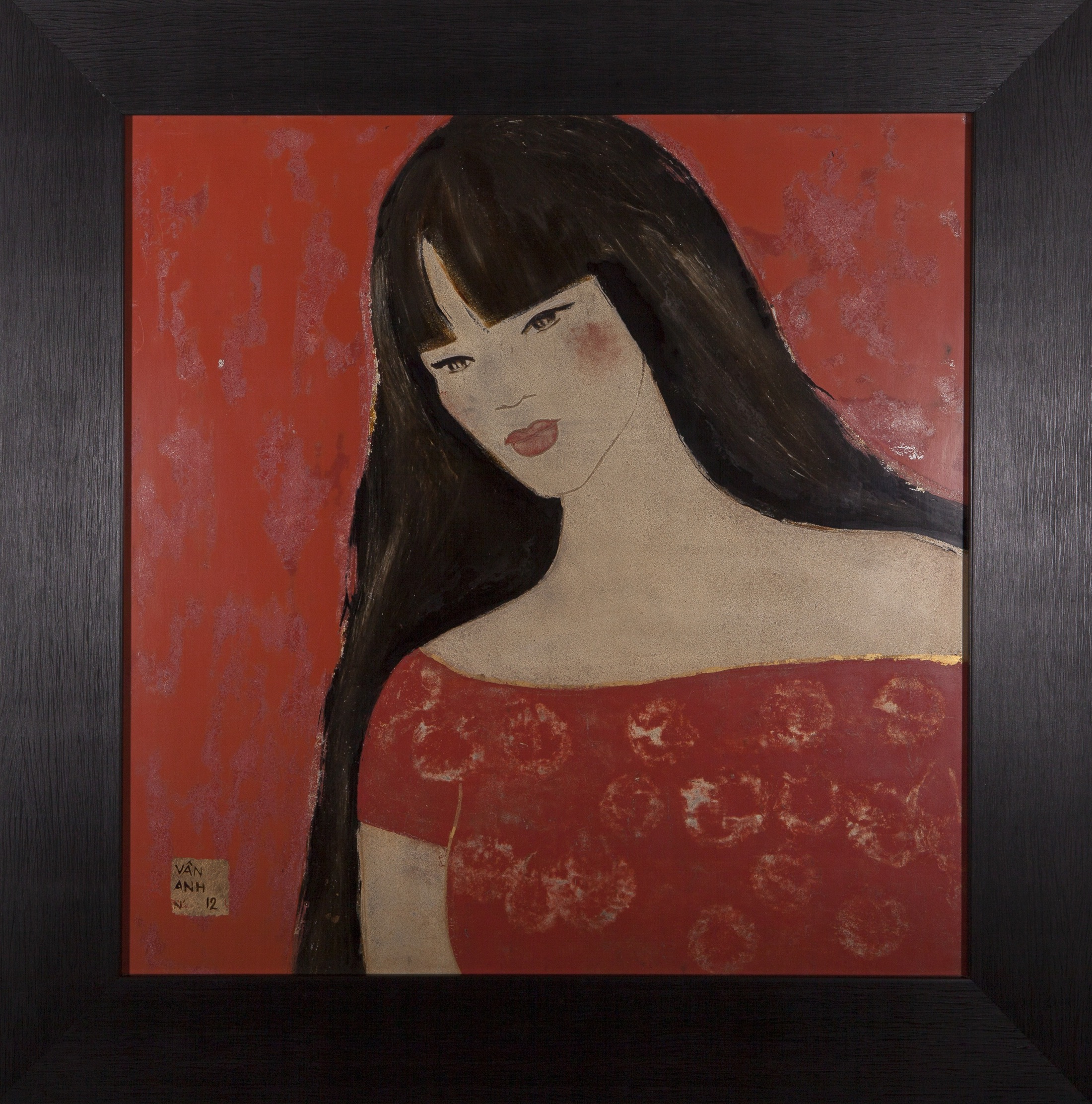Lacquer painting is a form of painting with lacquer, which was practiced in China and Japan for decoration on lacquer ware and found its way to Europe both via Persia and by direct contact with Asia. The genre was revived and developed as a distinct genre of fine art painting by Vietnamese artists in the 1930s. The genre is known in Vietnamese as “sơn mài.” Artists use lacquer in combination with other materials like: mother of pearl, eggshell, seashell, silver leaf, gold leaf, fabric… to create new form of lacquer. (wikipedia)
Making a lacquer painting may take several months depending on the technique used and the number of layers of lacquer. In Vietnam’s sơn mài lacquer painting first a black board is prepared. Then outlines in chalk are picked out in white with eggshell and clear varnish, then polished. Then the first layer of coloured lacquer is applied, usually followed by silver leaf and another layer of clear lacquer. Then several more layers of different coloured lacquers are painted by brush, with clear lacquer layers between them.
In Vietnam an artist may apply up to ten layers or more of coloured and clear lacquer.
In Ming China processes included up to a hundred layers.
Each layer requires drying and polishing. When all layers are applied the artist polishes different parts of the painting until the preferred colours show. Fine sandpaper and a mix of charcoal powder and human hair is used to carefully reach the correct layer of each specific colour. Consequently “lacquer painting” is in part a misnomer, since the bringing out of the colours is not done in the preparatory painting but in the burnishing of the lacquer layers to reveal the desired image beneath.
( source : wikipedia)

